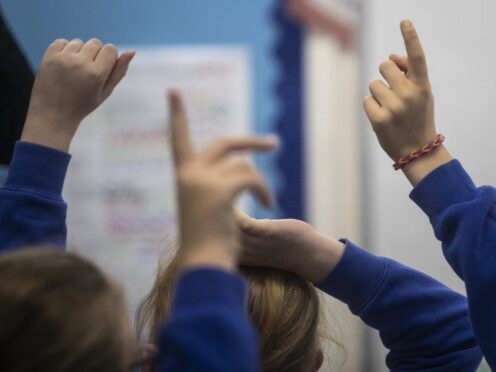The number of children and young people on support plans for special educational needs and disabilities in England has risen, figures suggest.
An additional 58,914 education, health and care (EHC) plans were in place in January this year compared to the same period a year before, according to data published by the Department for Education (DfE).
But nearly half of EHC plans, which set out the provision of special educational needs and disabilities (Send) support a child or young person needs, are still not being issued within the 20-week time limit.
The number of children and young people with EHC plans has increased by 11.4% in a year to 575,963.
This increase is higher than the 9.3% rise between 2022 and 2023, and the average yearly increase of around 10% since 2014, the DfE said.
The figures also show there were 84,428 new EHC plans that started during the 2023 calendar year, which is up by 26.6% from 2022.
Only just over half (50.3%) of new EHC plans were issued within the 20-week time limit in 2023, up from 49.2% in 2022.
An EHC plan is for children and young people aged up to 25 who need more support than is available through special educational needs support.
EHC plans identify educational, health and social needs and set out the additional support to meet those needs.
Paul Whiteman, general secretary of the school leaders union NAHT, said: “The number of children needing additional support through education and healthcare plans is now at a record high but many families are still waiting too long for the assessments, and provision that they need.”
He added: “The current system is simply not sustainable.
“The next government must tackle the Send crisis as a priority.”
Sarah White, head of policy at the national disability charity Sense, said: “Mainstream and early years schools are underfunded and ill-equipped to identify and meet the needs of children with special educational needs and disabilities and the consequences could be potentially devastating for them.
“It’s dismal that almost half (49.7%) of children and their families are waiting longer than 20 weeks to receive the EHC plans they so desperately need and it will be of little comfort to them that this is a very small improvement on 2022’s historic low.
“We also know many children are not getting the support they require even when they have a plan in place.”
Pepe Di’Iasio, general secretary of the Association of School and College Leaders (ASCL), said: “The continuing rise in the number of EHCPs is reflective of the increasing number of children and young people with complex needs.
“Failure to match rising demand with appropriate government investment has brought the whole Send system to the brink of collapse, with schools being unable to afford the costs of Send provision, a lack of places available in special schools, and local authorities having huge high needs deficits.”
Louise Gittins, chairwoman of the Local Government Association’s (LGA) children and young people board, said: “Councils want to be able to provide the very best support to children with special educational needs and their families.
“However, these record figures are a reminder of the huge pressure councils are under, with the number of EHCPs increasing every year since they were introduced in 2014.
“It is absolutely vital whoever forms the next government brings forward proposals without delay to reform the Send system, with a focus on improving levels of mainstream inclusion, as well as write off councils’ high needs deficits.”
